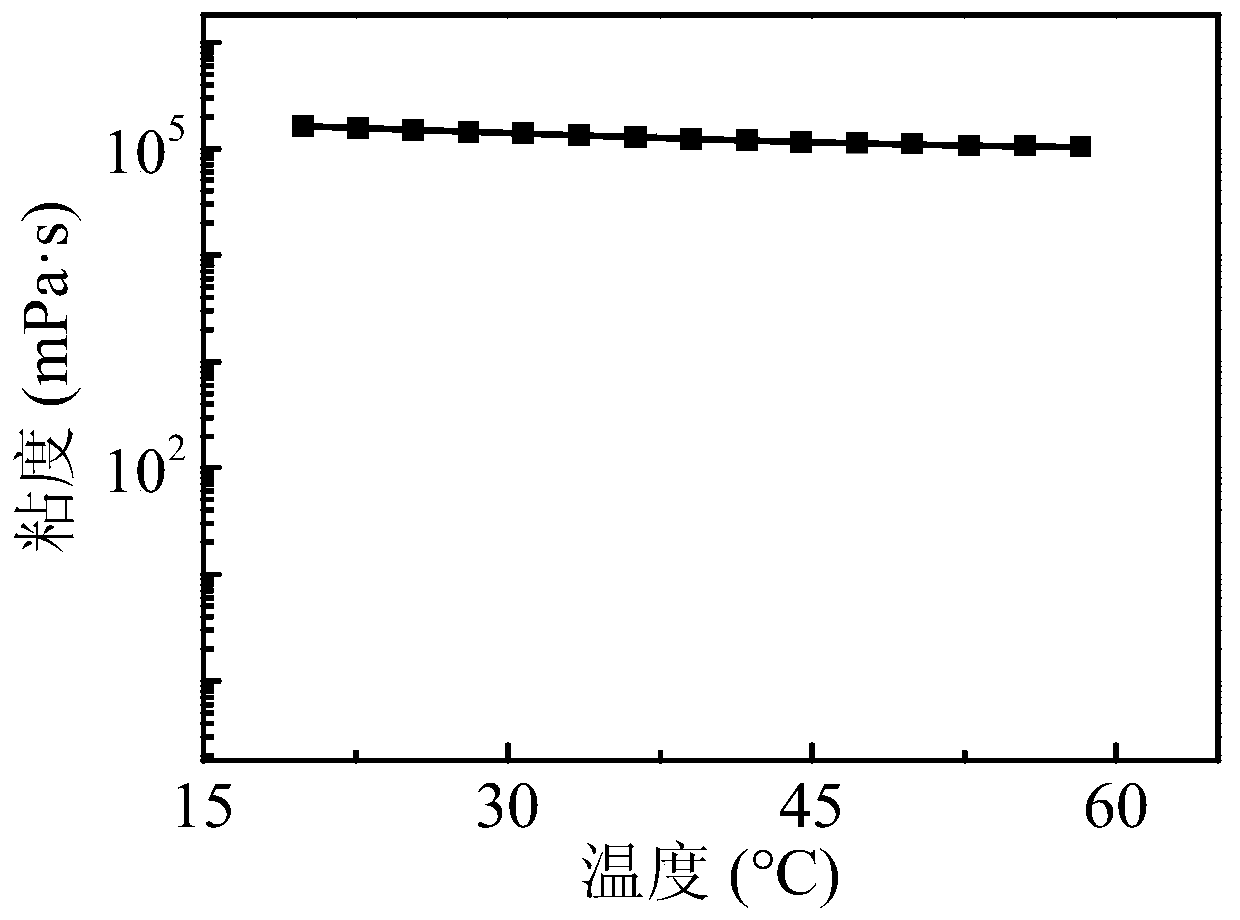A kind of bioadhesive based on ε-polylysine and its preparation method and application
A bio-adhesive, poly-lysine technology, applied in the fields of plastic surgery, rehabilitation medicine, and clinical medicine, can solve the problems of poor adhesion performance of fibrin adhesive, tissue burns on the bonding surface, short storage period, etc. To achieve the effect of safe and non-toxic material source, satisfying adhesion and repair, and good fluidity
- Summary
- Abstract
- Description
- Claims
- Application Information
AI Technical Summary
Problems solved by technology
Method used
Image
Examples
Embodiment 1
[0063] Prepare 1mg / ml hyaluronic acid aqueous solution and 10mg / ml ε-polylysine aqueous solution for later use, mix the above two solutions according to the mass ratio of hyaluronic acid and ε-polylysine 1:2.5, stir evenly, After standing at 10° C. for 24 h, the above mixed solution was placed in a vacuum pump and dried in vacuum for 0.5 h to finally obtain a bioadhesive based on ε-polylysine.
[0064] The physical picture of the obtained bioadhesive figure 1 , figure 1 It is a bioadhesive based on ε-polylysine prepared in a glass bottle, and the sample is uniform and transparent without precipitation.
Embodiment 2
[0066] Prepare 50mg / ml hyaluronic acid aqueous solution and 500mg / ml ε-polylysine aqueous solution for later use, mix the above two solutions according to the mass ratio of hyaluronic acid to ε-polylysine 1:50, stir evenly, After standing at 60° C. for 0.5 h, the above mixed solution was placed in a vacuum pump and dried in vacuum for 24 h to finally obtain a bioadhesive based on ε-polylysine, which can be used to bind biological tissues.
[0067] Cut pig large intestine into 2.5cm×1cm rectangular strips, soak in PBS phosphate buffered saline to remove surface oil, and slightly dry the surface with gauze. The prepared bioadhesive was evenly applied to one end of the large intestine of the pig, and the smeared area was 1cm×1cm. The other end of the pretreated pig large intestine was covered with the applied area of the bioadhesive, and it was removed after applying pressure with a weight for 30 minutes.
[0068] The bonding effect of the treated pig large intestine is as foll...
Embodiment 3
[0070] Prepare 15mg / ml hyaluronic acid aqueous solution and 100mg / ml ε-polylysine aqueous solution for later use, mix the above two solutions according to the mass ratio of hyaluronic acid to ε-polylysine 1:50, stir evenly, After standing at 50° C. for 0.5 h, add aspirin to the above mixed solution to 0.1 mM, and mix well. The above mixed solution was placed in a vacuum pump and dried in vacuum for 8 hours to finally obtain an ε-polylysine-based bioadhesive loaded with aspirin.
[0071] The rheological test of gained bioadhesive-the variation curve of viscosity with temperature is as follows image 3 , Viscosity-temperature test results show that as the temperature increases, the apparent viscosity of the ε-polylysine-based bioadhesive does not decrease significantly, indicating that this bioadhesive is a non-temperature-sensitive material. Store at room temperature, normal temperature changes will not affect the bonding performance of the adhesive.
PUM
 Login to View More
Login to View More Abstract
Description
Claims
Application Information
 Login to View More
Login to View More - R&D Engineer
- R&D Manager
- IP Professional
- Industry Leading Data Capabilities
- Powerful AI technology
- Patent DNA Extraction
Browse by: Latest US Patents, China's latest patents, Technical Efficacy Thesaurus, Application Domain, Technology Topic, Popular Technical Reports.
© 2024 PatSnap. All rights reserved.Legal|Privacy policy|Modern Slavery Act Transparency Statement|Sitemap|About US| Contact US: help@patsnap.com










